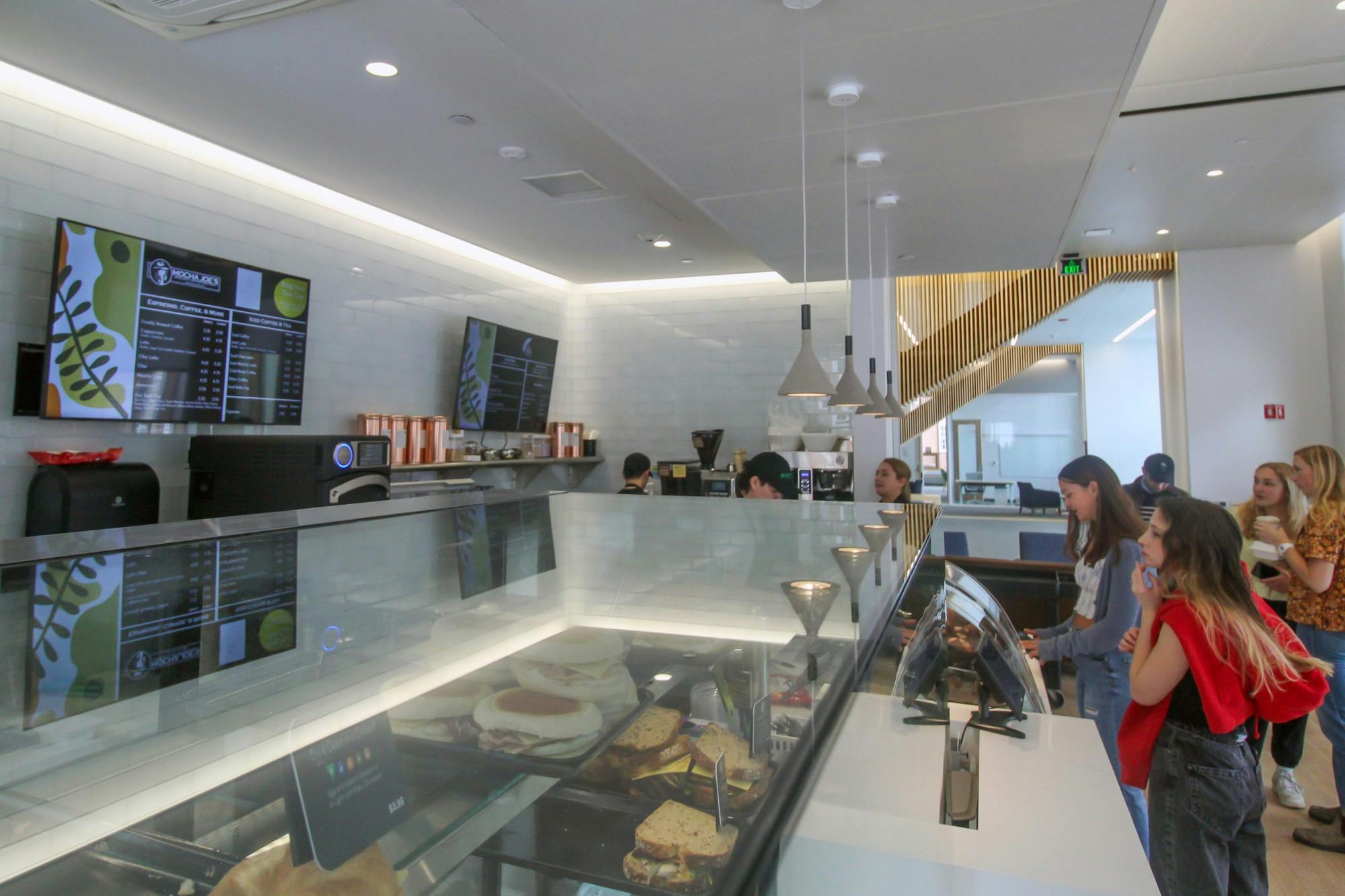Two terms after the projected completion date of Fall 2021, the Arthur L. Irving Institute for Energy and Society has replaced the tangled maze of pipes and rubble that once blocked so many walks to the River Cluster. Now, the gorgeous glass exterior of the building stands proudly, staring down Baker-Berry Library from the end of Tuck Drive. This is no accident: As the Institute’s website explains, “in the direct view of the Baker Library Tower, the symbolic heart of the College’s liberal arts commitment, the building serves as a nexus of Dartmouth energy and society research, education, and engagement, across all disciplines.”
I like the suggestion here of some animosity between the buildings: Irving, the newcomer to the Dartmouth architectural scene, directly challenges the assumption of Baker’s long-established campus dominance. Boasting highly efficient sustainability features that would only be disserviced by any attempt on my part to explain them, Irving represents everything big and green about the College, despite the irony of its being named after an oil baron; the Purdue Pharma Institute for Drug Rehabilitation would be an equally fitting counterpart.
My walk down Tuck Drive to the building felt nearly post-apocalyptic: Rubble from the project lined the path, paired with matted-down plant life and the sort of empty eeriness that would make the presence of a lone, rolling tumbleweed unsurprising. However, as I opened the Institute’s heavy glass door, I was hit by a wave of humming conversation — as though I had discovered the last hub of civilization and found a place of refuge from whatever threat was outside (climate change, maybe). The building’s interior was immediately striking: With high, openly lit ceilings, paneled walls and a calming atmosphere, the center of the Institute is just really, really, attractive.
Next, I wandered over to The Fern, a cafe which is a sorely welcome addition to the College’s scant dining options. The food is Novack-y, but with less of the frantic atmosphere and metallic design and more of a chic-organic Brooklyn cafe feel. There is even a fireplace, either for creating a cozy atmosphere or for backup heat in case any of the super-scientific new energy features fail. Overall, the main area reminded me of a classy airport — with natural lighting, chairs scattered about, a hip cafe and the buzz of intelligent but tired conversation, I felt like I was about to board a flight in the ’50s.
As I moved out of the main entryway and into the guts of the building, I found many of the rooms surrounding the lobby — already large — to be completely empty, practically begging for professors and energy research teams to fill them. I cannot foresee a need to ever return to the third floor of Baker-Berry for studying: The upper floors of the Institute host study areas overlooking both the beautiful lobby and the outdoors, with huge glass windows very much beating out the isolation of the Stacks.
At last was the bottom floor library — the Murdough Center, which is as humorless as its name suggests. A dense silence immediately overtook me as I entered the room, the soft carpet and chairs trapping all noise with a nearly demoralizing ruthlessness. This was a library thoroughly in control of its occupants: No chatter, no frivolity and absolutely no silly nicknames like “Blobby.” This was a librarian’s library, and as a more casual library user myself, I felt I had to leave before the silence suffocated me.
Unfortunately, lunch called, ending my tour. As I walked back to the Hop, I crossed by the Cube, a development which undoubtedly paved the way for the glassy, rectangular West Campus buildings. Soon enough, I was back in the capital-I Ivy League section of campus, surrounded by Georgian buildings reminding me that I attend a good old-fashioned, liberal arts college.
It is interesting how much of Dartmouth’s development can be traced by observing its varying architectural styles, just as a geologist might examine a cross-section of a piece of marble. The College has continued to expand its horizons beyond its historically significant, classic liberal arts roots found in Dartmouth Hall and Baker Tower into burgeoning STEM fields, through projects like the Irving Institute and the new engineering and computer science center.
These architectural endeavors have been mirrored by a shift in the College’s logo: Dartmouth now generally brands itself with the pine inside a green D, a sleeker, more modern alternative to the classic and preppy “Vox Clamantis in Deserto” crest. This shift in branding is unsurprising — in the global labor market, STEM degrees have become increasingly attractive, so Dartmouth is entertaining a conscious effort to brand itself not only as a liberal arts college but as a modern, tech-conscious global university.
Finally, I hope my tone here does not come with a sense of scorn or regretful nostalgia. Important as tradition may be, I don’t believe any institution can continue to thrive without some level of adaptation, and clearly, Dartmouth leadership has taken conscious steps to adapt to a changing world where modern beacons of sustainability have perhaps become more necessary than the pedigree of a classic library. I wonder how long it will be before the Irving Institute overtakes Baker Tower as the College’s primary marketing symbol.




